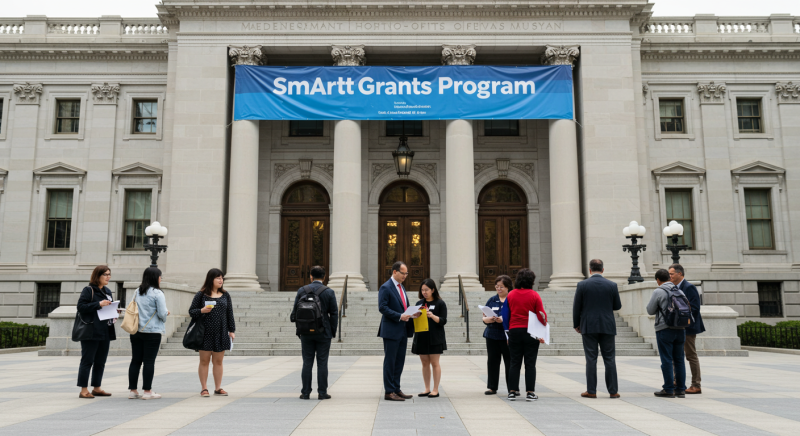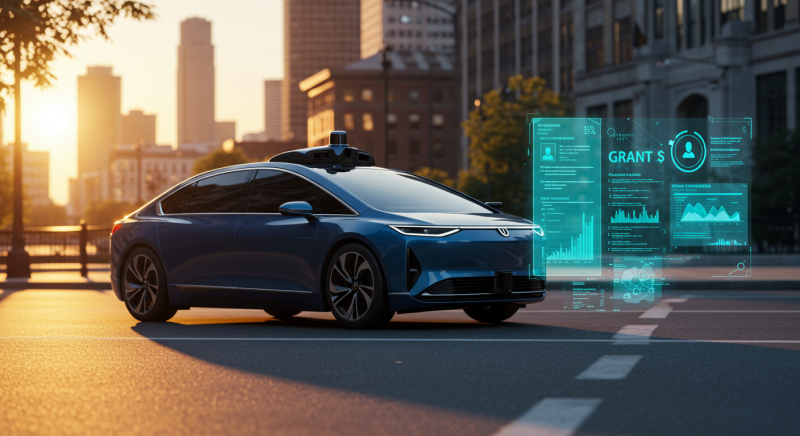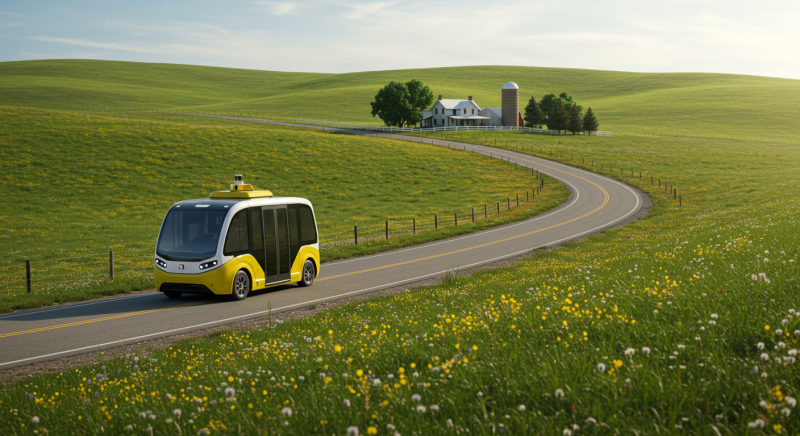In a world where dreams of self-driving cars can shape the future of transportation, securing autonomous vehicle grants for USA startups can feel like chasing starlight. Imagine the thrill of knowing your breakthrough sensor technology or cutting-edge software could receive vital funding to accelerate development and transform our roads. This guide begins with the promise of support, the hope that your vision will be recognized and rewarded, and the determination to bring life-saving innovation to millions of commuters.
Key Takeaways
You will discover which federal programs are actively investing millions in vehicle autonomy, how much funding is available per award, and the projected deadlines you cannot miss. You will learn a step-by-step roadmap on preparing a compelling application, tailoring your proposal to each grant’s priorities, and optimizing your timeline for success. By the end of this article, you’ll have the confidence to transform grant opportunities into tangible resources that propel your autonomous vehicle venture forward.

Latest News on Autonomous Vehicle Grants for USA Startups
The landscape of autonomous vehicle grants for USA startups has never been more robust. In June 2024, the Federal Transit Administration announced $11.6 million in funding under its Advanced Driver Assistance Systems (ADAS) and Automated Transit Bus Maintenance program, a clear sign that public agencies are betting big on safety-enhancing autonomy (FTA Research Funding). Meanwhile, the Department of Transportation’s flagship SMART Grants Program awarded over $50 million in FY23 to 34 technology demonstration projects nationwide under the Bipartisan Infrastructure Law, with applications for FY24 already opening soon (Traffic Technology Today). These milestones reaffirm that autonomous vehicle grants for USA startups are a critical lifeline for innovators aiming to deploy next-generation self-driving solutions.
Major private players are also signaling optimism. Autonomous delivery pioneer Nuro secured a $106 million round in April 2025, valuing the company at $6 billion—proof that venture capital still flows for proven autonomous vehicle startups (Reuters: Nuro Funding). And Waymo’s record $5.6 billion Series C in October 2024 highlights the immense scale of investment possible once you’ve demonstrated technical credibility (The Verge: Waymo Funding).
How to Apply for Autonomous Vehicle Grants for USA Startups
Securing autonomous vehicle grants for USA startups begins with pinpointing the exact funding opportunity that aligns with your innovation’s stage and impact goals. The U.S. Department of Transportation’s FY24 Stage 1 SMART Grant NOFO provides up to $2 million per award for planning and prototyping projects—ideal for startups developing hardware-in-the-loop simulations or early safety validation studies (FY24 Stage 1 SMART Grant NOFO)Department of Transportation.
Meanwhile, the Rural Autonomous Vehicle Program (RAVTRANS) focuses on autonomy tailored to non-urban environments, helping founders test delivery shuttles or on-demand transit pods in low-density areas (RAVTRANS NOFO). To broaden your search to all federal funding, explore the Grants.gov Learning Center’s “How to Apply for Grants” guide, which walks you through eligibility checks, search strategies, and using the Workspace application portal (Grants.gov How to Apply)Grants.gov.
Before crafting your proposal, ensure your startup meets basic eligibility requirements and registrations. Your organization must hold an active SAM.gov registration and Unique Entity Identifier (UEI), and each team member needs a Grants.gov profile tied to your UEI—this establishes proper roles and permissions in Workspace (Quick Start Guide for Applicants)Grants.gov. Confirm your eligibility type—whether as a small business, nonprofit, or academic partner—and enroll any subcontractors or collaborators in SAM.gov to prevent last-minute disqualifications (Grant Eligibility)Grants.gov.
Dive into the Notice of Funding Opportunity to align your narrative with program priorities. The SMART NOFO emphasizes safety and reliability, resiliency, equity, climate action, and data privacy; review the “Application & Narrative Requirements” section for exact page limits, font guidelines, and required forms such as SF-424 and SF-LLL (SMART One-Pager)NDDOT. Note that federal discretionary programs often demand a succinct project description, a detailed technical approach, and a thorough plan for community engagement—each element supporting your case for transformative autonomous technology.
When crafting your proposal narrative, lead with a powerful executive summary that showcases your startup’s unique value proposition and the societal benefit of your autonomous solution, weaving in autonomous vehicle grants for USA startups to reinforce SEO visibility. Break down your technical methodology—sensor fusion algorithms, high-definition mapping, edge AI inference engines—into clear sections, and accompany each with a realistic timeline and budget justification showing how every dollar propels the project toward key milestones (Grant Writing: Discussing Impact)blog.grants.gov. Grant reviewers appreciate concrete outcome statements—forecasted reduction in crash rates, projected transit ridership growth in underserved communities, or anticipated carbon emission cuts—so quantify wherever possible (Grant Writing Basics)Wikipedia.
To maximize your chances in the competitive pool of autonomous vehicle grants for USA startups, think like a peer reviewer: highlight how your objectives map directly onto the Infrastructure Investment and Jobs Act’s eight SMART technology domains, and showcase prior successes or partnerships that demonstrate your team’s capacity to deliver (SMART Project Types)Department of Transportation. Tailor each section of the narrative—problem statement, technical solution, expected benefits, and project readiness—to mirror the NOFO’s evaluation criteria, using headings that echo the grant language to underscore relevancy.
Finally, follow best practices for submission and tracking. Submit your application package at least 48 hours before the deadline to allow for system validations, and use the Grants.gov “Track My Application” portal to confirm receipt and validation statuses (Submit Early; Track My Application)blog.grants.govGrants.gov. Should errors arise during validation, correct and resubmit promptly, and be prepared to respond to agency clarifications post-submission. With a polished, focused application that leverages every facet of autonomous vehicle grants for USA startups, your team will be poised to secure the funding needed to drive next-generation autonomy to our roads.

Key Programs and Funding Opportunities
Several flagship programs dominate the realm of autonomous vehicle grants for USA startups:
Automated Driving System (ADS) Demonstration Grants Program
The ADS Demonstration Grants Program was seeded with $60 million under the Consolidated Appropriations Act, 2018, and launched to fund planning, research, and on-road trials of fully automated driving systemsDepartment of Transportation. Its core objectives include validating the safe integration of ADS into public roadways, collecting real-time safety data, and fostering collaboration between startups, state and local agencies, and academic institutionsFederal Transit Administration. Eight awardees in 2019 spanned shuttle pilots for older adults to optimized freight corridors—projects that laid the groundwork for today’s autonomous vehicle grants for USA startups landscapeUS Ignite. While direct awards went to public agencies and universities, startups often participate as key technology partners or subcontractors, contributing sensor suites, AI stacks, or simulation tools.
Strengthening Mobility and Revolutionizing Transportation (SMART) Grants
The SMART Grants Program, backed by the Bipartisan Infrastructure Law with $500 million over five years, supports demonstration projects in smart community and smart city technologies Department of Transportation. In FY 2024 Stage 1, USDOT allocated $50 million across roughly 30 awards of up to $2 million each for planning and prototyping autonomous solutions—ideal for startups refining vehicle autonomy algorithms, edge-processing hardware, or digital twin environments Federal Transit Administration. Eligible participants include consortia led by public sector agencies, but many awards feature startup-driven technology partners that bring cutting-edge autonomy stacks, mapping software, or cybersecurity modules volpe.dot.gov. Stage 2 implementation grants, expected later in 2024, will offer up to $15 million apiece to transition prototypes onto public roads, making SMART a two-tiered pathway for autonomous vehicle grants for USA startups.
Rural Autonomous Vehicle Program (RAVTRANS)
To bridge the mobility gap in non-urban America, USDOT’s Rural Autonomous Vehicle Program dedicates $25 million for cooperative agreements—$15 million focused on people-moving demonstrations and $10 million on freight automation in rural and Tribal communitiesGrants.gov. Awardees must form consortia led by institutions of higher education, but private sector startups are welcome as specialized technology contributors, supplying autonomous shuttles, delivery drones, or remote operation platformsRural Health Information Hub. Projects span six-year cooperative agreements and require a 50 percent cost match, challenging teams to demonstrate long-term viability and community engagement for autonomous vehicle grants for USA startups in low-density regionsHome.
Federal Transit Administration’s ADAS & Automated Transit Bus Programs
FTA’s Advanced Driver Assistance Systems (ADAS) for Transit Buses and its Automated Transit Bus Maintenance and Yard Operations programs awarded $11.6 million in mid-2023 to six projects exploring retrofits of existing fleets and autonomous yard operations Federal Transit Administration. Awardees include transit agencies partnering with startups to integrate collision-avoidance sensors, AI-driven operations management, and automated parking/recall systems—demonstrations that directly inform future autonomous vehicle grants for USA startups by showcasing real-world safety and efficiency gains in public transit contexts Home. These FTA streams remain open to new proposals, with future rounds expected to expand support for both hardware upgrades and software-centric autonomy platformsFederal Transit Administration.
By mapping your startup’s technology readiness level to the most suitable program—whether early-stage ADS prototyping, SMART’s phased grants, rural mobility pilots, or transit-focused ADAS demonstrations—you can effectively navigate the competitive terrain of autonomous vehicle grants for USA startups and secure the capital necessary to drive safe, equitable, and scalable autonomy across America’s roads.
Conclusion
Securing autonomous vehicle grants for USA startups can be transformative, providing the critical resources needed to accelerate innovation, validate prototypes, and scale operations. From ADS Demonstration Grants to SMART’s multi-million-dollar awards, the U.S. government is investing heavily in the future of autonomy. By understanding program objectives, crafting targeted proposals, and leveraging the latest application guidelines, founders can turn the dream of self-driving vehicles into reality.
FAQ
What are autonomous vehicle grants for USA startups?
Autonomous vehicle grants for USA startups are federally funded programs designed to support research, prototyping, and demonstration of self-driving technologies by providing financial awards ranging from hundreds of thousands to tens of millions of dollars.
Who is eligible to apply?
Eligibility typically includes U.S. based startups, universities, and non-profit organizations. Some programs, like SMART Stage 2, require prior Stage 1 award recipients to apply.
How much funding can I expect?
Funding varies by program: ADS grants awarded a total of $60 million in 2019, SMART Stage 1 offers up to $2 million per award, and SMART Stage 2 can grant up to $15 million per project.
When are deadlines and how do I stay informed?
Deadlines differ by NOFO. For SMART grants, Stage 1 applications were due July 12, 2024. Subscribe to updates from the USDOT and Grants.gov to receive notifications.
What makes a winning proposal?
A standout application combines a clear project vision, detailed technical and budget plans, strong team credentials, and alignment with grant priorities. Emphasize safety benefits, innovation potential, and community impact for best results.
read more
Unlock Your Dream Job in Nigeria’s High-Demand Sectors: Tech, Oil & Gas, Banking & Telecoms Await!

